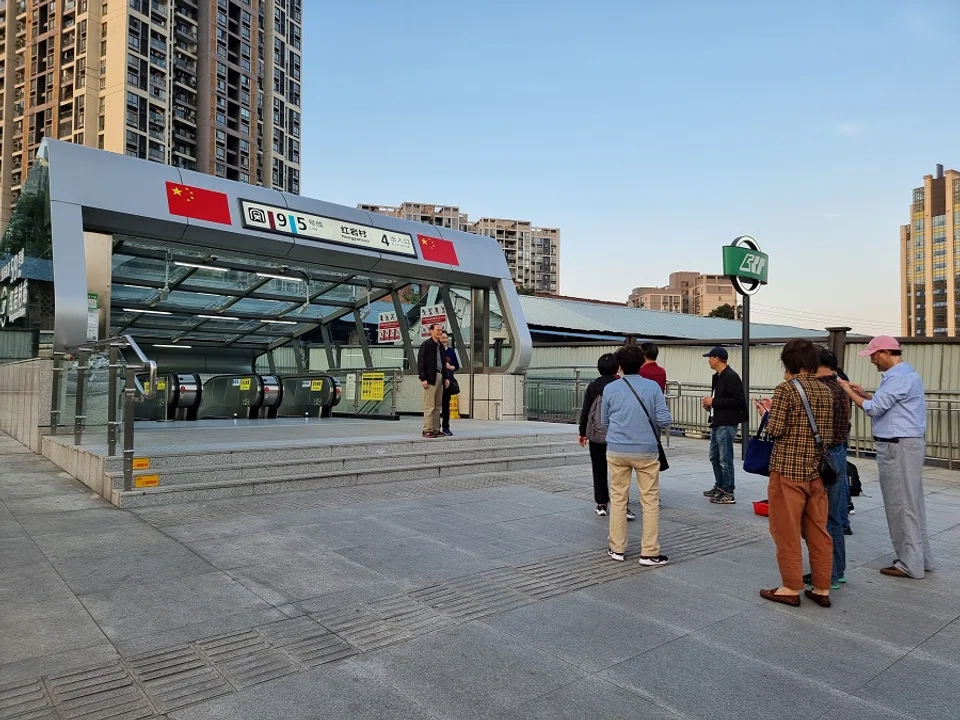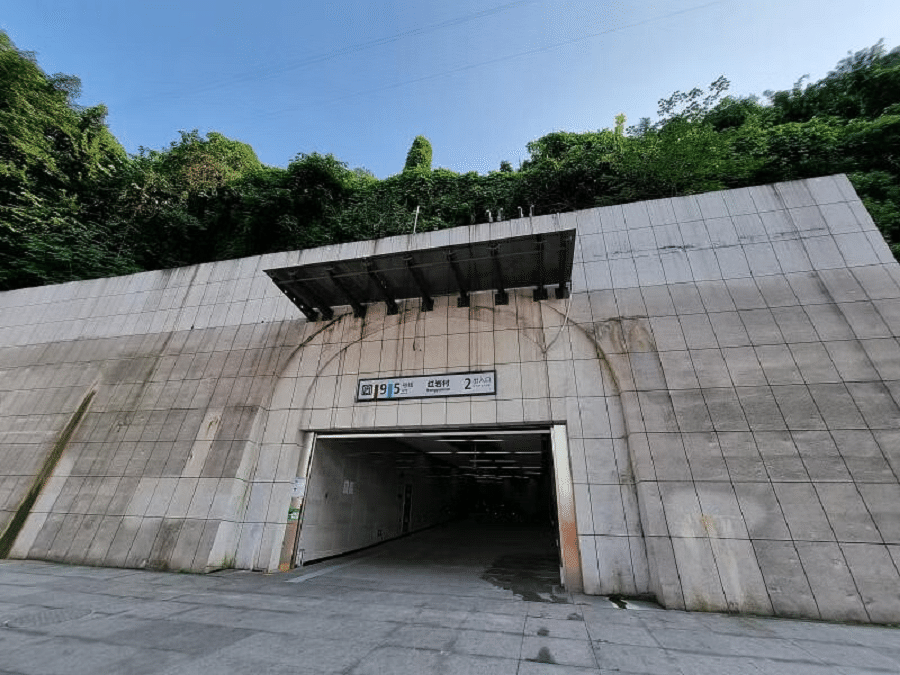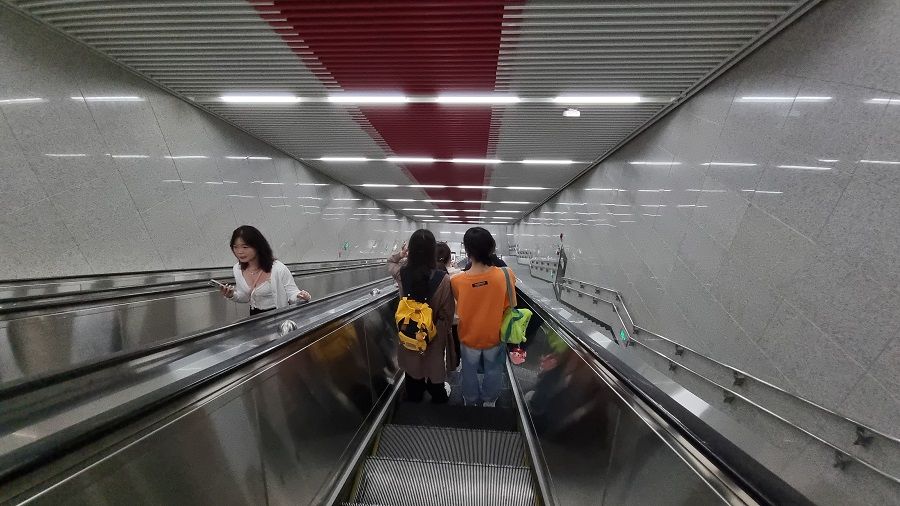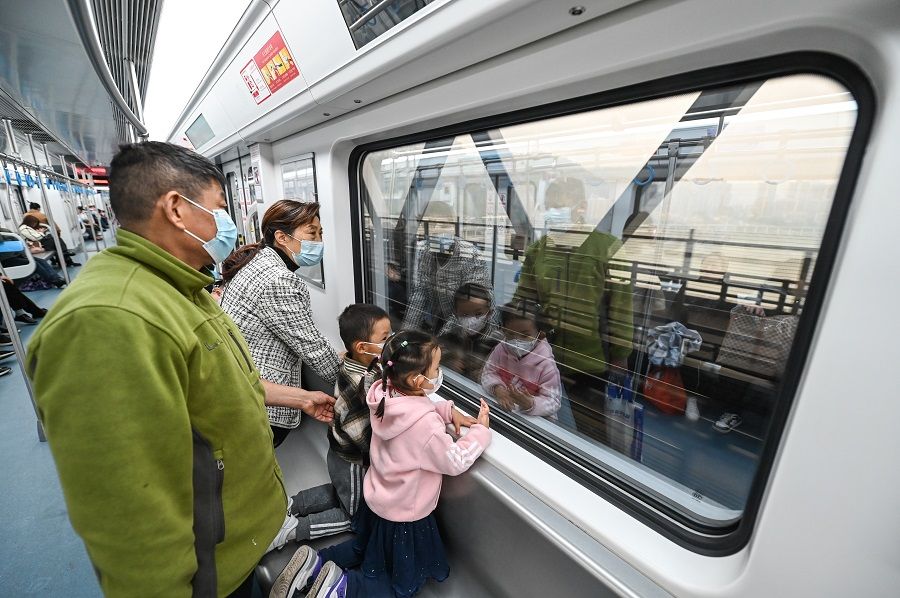[Video] Chongqing's Hongyancun now the deepest metro station in China

The record for China's deepest metro station was broken by Chongqing last year with the opening of Hongyancun Station at a depth of 116 metres, equivalent to the height of a 39-storey building. The station has become another attraction of the "Mountain City", with foreign tourists flocking to the place to "check in".
Interviewed residents said that although the opening of the metro station has brought great convenience to the area, they are worried if commuters can evacuate quickly from the 116-metre station in case of an emergency, given the prevalence of railway accidents in Chongqing this year.
Hongyancun Station on Chongqing Metro Line 9 is situated at the junction of Yuzhong district, the heart of Chongqing, and Shapingba district, in the west of downtown Chongqing. The station is dug out and built into a mountain, and its design and construction was extremely challenging. Construction began in August 2017, with mining equipment used to dig vertical shafts over 100 metres deep. To ensure the safety and efficiency of construction works, the main body of the station took nearly three years to complete.
Hongyancun Station is currently the second-deepest metro station in the world; the deepest one is in Pyongyang, with a maximum depth of 200 metres underground.
Chinese media reported that during the construction phase, workers had to climb up and down for nearly 40 minutes every day to reach the site. It took over 400 days to excavate the mountain before a tunnel could run through it.
After it opened in 2022, Hongyancun Station broke the record of China's deepest metro station. The previous record was held by Hongtudi Station on Chongqing Metro Line 10, which was opened in 2017, with a depth of over 94 metres, equivalent to the height of a 31-storey building.
Hongyancun Station is currently the second-deepest metro station in the world; the deepest one is in Pyongyang, with a maximum depth of 200 metres underground.
There are two entrance/exit points at Hongyancun Station. Three escalators are needed to reach Entrance/Exit No. 2, and the whole journey takes over 13 minutes. The exit leads to Jialing River at the foot of the mountain.

Entering the station from Entrance/Exit No. 4, one has to take seven escalators downhill, an eight-minute journey, before reaching the security gantry. After entering the station, one would need to take another escalator to reach the platform.
A boon for residents
When interviewed, residents who live near the station said the Hongyancun Station has brought great convenience to local residents and office workers.
Ran Xiaoqiong, 55, who has lived in the area for 15 years, said before the metro station was opened, local residents mostly commuted by bus due to the steep terrain and limited space above Hongyancun Station. But because the roads were narrow, traffic was always congested, and now "commuting by metro is much more convenient because there are no traffic jams".
She also said that it is now much easier for residents on the mountain to visit Jialing River at the foot of the mountain.

Su Qing, a nearby resident in her twenties who works in the service industry, commutes via the Hongyancun Station nearly every day. She said that initially, she felt it was a hassle having to spend over ten minutes to reach the station as she scrambled to get to work, but over time, she got used to it.
Su added that the station has greatly improved the convenience of local transportation. "The benefit (of taking the metro) is that it is cheap, and not too crowded."
Chen Siyan, a 42-year-old who works at a company near the station, also felt that "the bus might take even longer, and might waste even more time than the ten minutes on the escalator into the station".
Chongqing is a mountainous city, and the metro runs through mountains and across rivers, oftentimes with stations deeply nestled within them. The most popular spot for netizens to visit is Liziba Station on Line 2, where the metro tracks run through a building. As the deepest metro station in modern China, the Hongyancun Station has begun to attract tourists as a "check-in" destination.

Li Changguang, a 62-year-old from Wenzhou, Zhejiang, took his first ever trip to Chongqing, visited Liziba station, and continued to Hongyancun Station. After taking the seven-part escalator to exit the station, he exclaimed that he had never seen such a deep tunnel that cuts across a mountain: "It's fascinating how it's still the ground level after exiting the station."
Constructing the world's largest transportation network
Chongqing's metro lines have kept expanding in recent years, exceeding 500 km this year and gradually becoming the world's largest mountain city rail transportation network. However, since March, the Chongqing Metro has also broken down quite a few times.
In the second half of July, the Chongqing Metro experienced three faults in ten days, including an equipment fault on 29 July on Line 2, with passengers trapped in the cabins for 40 minutes. According to videos uploaded by netizens, flashes and explosions were seen at Mawangchang station along Line 2, with flames on the tracks emitting white smoke, raising safety concerns.
According to the official Weibo account of Chongqing Rail Transit, the Chongqing Metro has experienced seven faults since March; Line 3 had the most faults - four - with the most recent case occurring on 21 September.
"If there's an emergency in the station, would there be safety issues? After all, it is 100 metres deep, and it would be difficult for one to return quickly to the surface." - Wang Xing, a Chongqing resident
Safety concerns
Hongyancun Station's depth also raised safety concerns from citizens. Wang Xing, 28, said in an interview: "Every time I hear about a fault on the other lines of the Chongqing Metro, I can't help but feel a tad worried."

He said: "If there's an emergency in the station, would there be safety issues? After all, it is 100 metres deep, and it would be difficult for one to return quickly to the surface."
This reporter observed that Exit No. 4 at Hongyancun Station is equipped with three escalators - one more than at other stations - with one going in each direction, and another as backup to facilitate quicker evacuation of passengers in case of an incident.
Tan Gangqiang, head of a psychology consultation centre in Chongqing (重庆市协和心理顾问事务所), has been to Hongyancun Station. When interviewed, he said that he felt there are currently no major evacuation risk at the station, but stressed that there is a need to keep up with maintenance of the escalators to prevent them from breaking down.
Tan pointed out that as the Chongqing Metro lines expand, it will help people to get around, as well as spur urban and economic development, but safety aspects and meticulous management must also keep up. Given Chongqing's complex geography, some stations would need special management. "Services are only effective only when they are truly centred on safeguarding security," he said.
This article was first published in Lianhe Zaobao as "重庆再度改写中国最深地铁站纪录 深度达39层楼".
